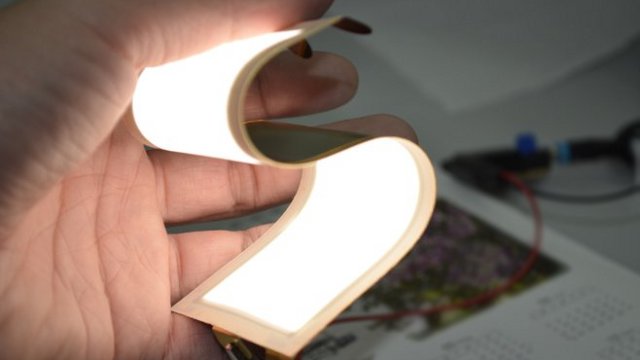
What is it?
As LED lighting has shown remarkable efficiency improvements over fluorescent and HID lighting in recent years, a logical question to ask is what may be next on the horizon to further lighting technology even beyond LEDs. Two possibilities include organic light emitting diode (OLED) and laser diode (LD) lighting. Both of these currently have limited commercial applications and availability, are expensive, and may not currently offer significant advantages over LED lighting, but they do show promise and provide a glimpse into what might be next.
How does it work?
OLEDs work by exciting organic compounds. The best way to explain them versus LEDs is that LEDs are point source lights while OLEDs are diffuse lights. They currently have an efficacy of about 25 lumens per watt commercially, which isn’t as good as LEDs at about 80-100 lumens per watt. However, OLEDs are getting better all the time.
Laser diodes are like LEDs but highly concentrated. So concentrated, in fact, that they can be blinding. Right now, LDs have a power conversion efficiency of about 30%, whereas LEDs are about 70%. However, like OLEDs, LD efficiencies are continuously getting better.
What are the most appropriate applications?
Currently, OLEDs are mostly used in electronic displays like TVs and smartphone screens. They offer a desirable true black color in these applications. Commercially, OLEDs are mostly limited to decorative lighting. They are typically available in flat panels which can be arranged into unique arrays.
LDs are not currently available for common commercial applications, although BMW has started to use them in the headlights of their supercars. One other possible application that is being investigated is use in projectors, such as IMAX.
Dream Big
OLEDs can be printed flat, are flexible, and stay cooler than LEDs. This opens up the possibility of unique uses such as lighting in hard-to-reach areas or even wearable lighting. Entire walls or surfaces could be lit with OLEDs, possibly reducing the need for common point-source lighting.
Since LDs are so concentrated, it’s possible they could be used in a central lighting plant, similar to how many large buildings use central chiller and boiler plants for HVAC. Like how hot and cold water is piped to the locations where it is needed in building HVAC, LD light could be “piped” to different areas using fiber optics. Individual fixtures could be made obsolete, improving overall efficiency and reducing maintenance.
Although OLEDs and LDs need improvement before they cut into the LED market, both offer some exciting possibilities for the world of lighting. They may seem a long way off, but the future always comes faster than we think.




